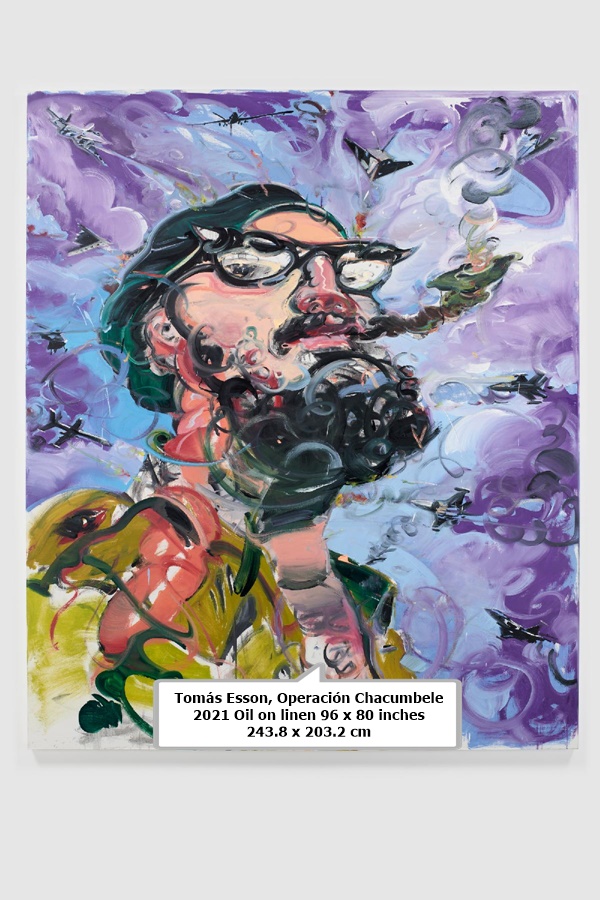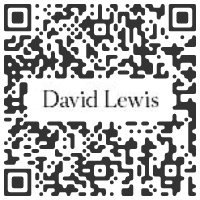"KRAKEN"
Tomás Esson
Curated by Gean Moreno

David Lewis Gallery
88 Eldridge Street New York NY 10002Tel +1 212 966 7990 e-mail:



March 15 > April 24, 2021

David Lewis is pleased to present KRAKEN, Tomás Esson’s first solo exhibition with the gallery since announcing our representation of the artist, and first exhibition in New York in over a decade. This exhibition follows Esson’s major solo museum presentation The GOAT at the ICA Miami in 2020.
Esson was born in Havana, Cuba, in 1963 and studied in the island’s famed Instituto Superior de Arte. Considered one of the most important artists of his generation by his own peers, as well as critics and curators, he quickly came to broad public attention when his first exhibition in Havana, A Tarro Partido II (With Broken Horn II), was shuttered by local party officials. Citing Esson’s grotesque representation of venerable icons of the Cuban Revolution, such as Che Guevara, the exhibition lasted less than 24 hours. This event instantly became emblematic of the repression that resurfaced in the mid-1980s as Cuban artists began to more critically address the social realities in Cuba and the geopolitical shifts that were being felt with the disintegration of the socialist project. During the end of the 1980s, Esson participated in some of the most important exhibitions and biennials in Cuba and Latin America, and his works began to be exhibited in Europe and collected widely. In 1990, Esson moved to the US.
KRAKEN presents works from two ongoing series of paintings: Miami Flow, which marries abstraction to certain dynamics of animation, and a long line of portraits of Fidel Castro, which Esson began in the late 1980s with paintings that had to be smuggled out of Cuba. Over the years, Esson periodically returns to the figure of Fidel as flexible icon through which a series of shifting historical and social realities can be filtered. This series bridges the transition from a socialist world in decline to its dire aftermaths. In settling into and exploring this space of histor-ical transition, Esson’s Fidel paintings should be considered as much in relation to the disillusioned projects of his generational peers as to other artists, such as Neo Rauch, who are ambivalently reckoning with the disintegration of the socialist project on a global scale and all that has emerged from its ruins.
The Miami Flow paintings, which began in 2015, intensify the slivers of landscape that have always been present in Esson’s figurative works into dynamic abstraction. Beginning with sexualized flowers and lascivious vegetation in the early paintings in the series, the velocity in the work eventually led the Miami Flow paintings to become increasingly abstract, severed from any obvious referents. Instead, the logic of coupling forms that Esson borrows from early animation is to intensify a non-referential plane. It is almost as if the sub-visual dynamics of the land-scapes—the microbial and chemical transaction—are being amplified into gestural visual forms.
Along with the paintings, KRAKEN also includes a new Wet Drawing—a mural produced on site. The Wet Drawings are works that distilled figuration into five elemental elements—eyes, vagina, breasts, penis and mouth--and set these into dynamic compositions in which the forms are coupled into animated chains. First conceived in 1995, when Esson was living in New York, the Wall Drawings also index his first contact with cultures of the African Disapora outside of his immediate Cuban experience. The art historian Erica Moaih James has found that these works, stepping into new territory, started a dialogue with a number of artists from the African Diaspora who employ humor and the grotesque in exercises of social criticism. James names Robert Colescott, David Hammons, and Hervé Télémaque in particular, but we could add Kara Walker and Kerry James Marshall to the discussion, to say nothing of the legion of cartoonists who have turned their work on the realities of diasporic experience.
-Gean Moreno
Director, Art + Research Center, ICA Miami
Esson was born in Havana, Cuba, in 1963 and studied in the island’s famed Instituto Superior de Arte. Considered one of the most important artists of his generation by his own peers, as well as critics and curators, he quickly came to broad public attention when his first exhibition in Havana, A Tarro Partido II (With Broken Horn II), was shuttered by local party officials. Citing Esson’s grotesque representation of venerable icons of the Cuban Revolution, such as Che Guevara, the exhibition lasted less than 24 hours. This event instantly became emblematic of the repression that resurfaced in the mid-1980s as Cuban artists began to more critically address the social realities in Cuba and the geopolitical shifts that were being felt with the disintegration of the socialist project. During the end of the 1980s, Esson participated in some of the most important exhibitions and biennials in Cuba and Latin America, and his works began to be exhibited in Europe and collected widely. In 1990, Esson moved to the US.
KRAKEN presents works from two ongoing series of paintings: Miami Flow, which marries abstraction to certain dynamics of animation, and a long line of portraits of Fidel Castro, which Esson began in the late 1980s with paintings that had to be smuggled out of Cuba. Over the years, Esson periodically returns to the figure of Fidel as flexible icon through which a series of shifting historical and social realities can be filtered. This series bridges the transition from a socialist world in decline to its dire aftermaths. In settling into and exploring this space of histor-ical transition, Esson’s Fidel paintings should be considered as much in relation to the disillusioned projects of his generational peers as to other artists, such as Neo Rauch, who are ambivalently reckoning with the disintegration of the socialist project on a global scale and all that has emerged from its ruins.
The Miami Flow paintings, which began in 2015, intensify the slivers of landscape that have always been present in Esson’s figurative works into dynamic abstraction. Beginning with sexualized flowers and lascivious vegetation in the early paintings in the series, the velocity in the work eventually led the Miami Flow paintings to become increasingly abstract, severed from any obvious referents. Instead, the logic of coupling forms that Esson borrows from early animation is to intensify a non-referential plane. It is almost as if the sub-visual dynamics of the land-scapes—the microbial and chemical transaction—are being amplified into gestural visual forms.
Along with the paintings, KRAKEN also includes a new Wet Drawing—a mural produced on site. The Wet Drawings are works that distilled figuration into five elemental elements—eyes, vagina, breasts, penis and mouth--and set these into dynamic compositions in which the forms are coupled into animated chains. First conceived in 1995, when Esson was living in New York, the Wall Drawings also index his first contact with cultures of the African Disapora outside of his immediate Cuban experience. The art historian Erica Moaih James has found that these works, stepping into new territory, started a dialogue with a number of artists from the African Diaspora who employ humor and the grotesque in exercises of social criticism. James names Robert Colescott, David Hammons, and Hervé Télémaque in particular, but we could add Kara Walker and Kerry James Marshall to the discussion, to say nothing of the legion of cartoonists who have turned their work on the realities of diasporic experience.
-Gean Moreno
Director, Art + Research Center, ICA Miami
 | Tomás Esson |
mpefm USA art press release
Opening Hours:
by appointment only

by appointment only
QR of this press release
in your phone, tablet








